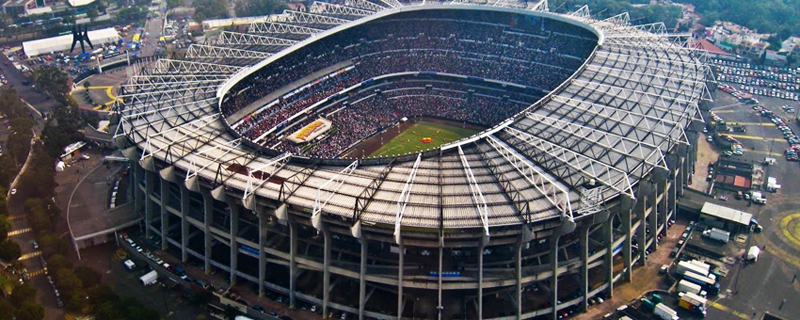Sports Stadiums: Epicenters of Athletic Excellence...!!!
Sports stadiums are more than just venues for athletic events; they are symbols of culture, community, and innovation.

The Intriguing World of Sports Stadiums
Sports stadiums are iconic landmarks that stand at the heart of athletic events, uniting athletes, fans, and communities. These venues are meticulously designed to host large crowds, ensuring an immersive experience for spectators as they enjoy their favorite sports. From football and baseball to cricket and rugby, sports stadiums play a pivotal role in the world of sports. Let's delve into the key aspects of sports stadiums, their history, design, and significance.
History and Evolution
The concept of sports stadiums dates back to ancient times. One of the earliest known stadiums is the Panathenaic Stadium in Athens, Greece, constructed in 330 BC for the Panathenaic Games. Another iconic example is the Colosseum in Rome, built around AD 70-80, which hosted gladiatorial contests and other public spectacles.
Throughout the centuries, stadiums have evolved remarkably in terms of design, capacity, and amenities. The 19th and 20th centuries saw the construction of many modern stadiums, such as Wembley Stadium in London and Yankee Stadium in New York City. Today, stadiums are equipped with advanced technology, luxurious seating, and state-of-the-art facilities to elevate the spectator experience.
Architectural Design and Features
Modern sports stadiums are architectural wonders that seamlessly blend functionality, aesthetics, and sustainability. Key features of stadium design include:
1.Seating Capacity: Stadiums vary in size, with some capable of accommodating over 100,000 spectators. For example, the Rungrado 1st of May Stadium in North Korea can hold approximately 114,000 people, making it one of the largest stadiums globally.
2.Field Surface: The playing surface can be natural grass, artificial turf, or a hybrid of both, depending on the sport and climatic conditions.
3.Roof Structure: Many modern stadiums feature retractable roofs or canopies that provide shelter from the elements while allowing natural light to enter. Notable examples include the Mercedes-Benz Stadium in Atlanta and the AT&T Stadium in Arlington.
4.Scoreboards and Video Screens: High-definition scoreboards and video screens are essential components of modern stadiums, offering real-time updates, replays, and entertainment for spectators.
5.Accessibility: Stadiums are designed to be accessible to all, incorporating features such as ramps, elevators, and designated seating areas for people with disabilities.
6.Sustainability: Many stadiums incorporate eco-friendly features, such as solar panels, rainwater harvesting systems, and energy-efficient lighting. The Tottenham Hotspur Stadium in London exemplifies a sustainable sports venue.

Economic and Social Impact
Sports stadiums have a profound economic and social impact on the communities where they are located. They generate employment, stimulate local businesses, and attract tourism. Major events like the Olympics, World Cup, and Super Bowl can bring substantial revenue to host cities.
Stadiums also serve as cultural landmarks and gathering places for fans, fostering a sense of community and shared identity. They host not only sports events but also concerts, festivals, and other large-scale gatherings.
Technological Advancements
The integration of technology has revolutionized the stadium experience for both spectators and athletes. Key technological advancements include:
1.Wi-Fi Connectivity: Many stadiums offer high-speed Wi-Fi, enabling fans to stay connected, share their experiences on social media, and access real-time statistics and updates.
2.Virtual and Augmented Reality: Some stadiums are experimenting with VR and AR to provide immersive experiences, such as virtual tours and enhanced viewing options.
3.Smart Stadiums: The concept of smart stadiums involves using IoT (Internet of Things) devices and sensors to monitor and optimize various aspects of stadium operations, from crowd management to energy consumption.
Iconic Sports Stadiums Around the World
Several sports stadiums are renowned for their history, design, and atmosphere. Some of the most iconic stadiums include:
1.Camp Nou: Home to FC Barcelona, Camp Nou is one of the largest and most famous football stadiums in the world.
2.Madison Square Garden: Known as "The Garden," this iconic venue in New York City hosts basketball, hockey, concerts, and more.
3.Melbourne Cricket Ground (MCG): The MCG is one of the most prestigious cricket stadiums, hosting major matches and events in Melbourne, Australia.
4.Wembley Stadium: Located in London, Wembley is a symbol of English football and hosts major sporting and entertainment events.

Sports stadiums are more than just venues for athletic events; they are symbols of culture, community, and innovation. With their impressive architectural designs, advanced technology, and significant economic impact, stadiums continue to play a vital role in the world of sports. Whether cheering for a favorite team, attending a concert, or exploring architectural marvels, the experience of being in a sports stadium is truly unforgettable.
What's Your Reaction?

















